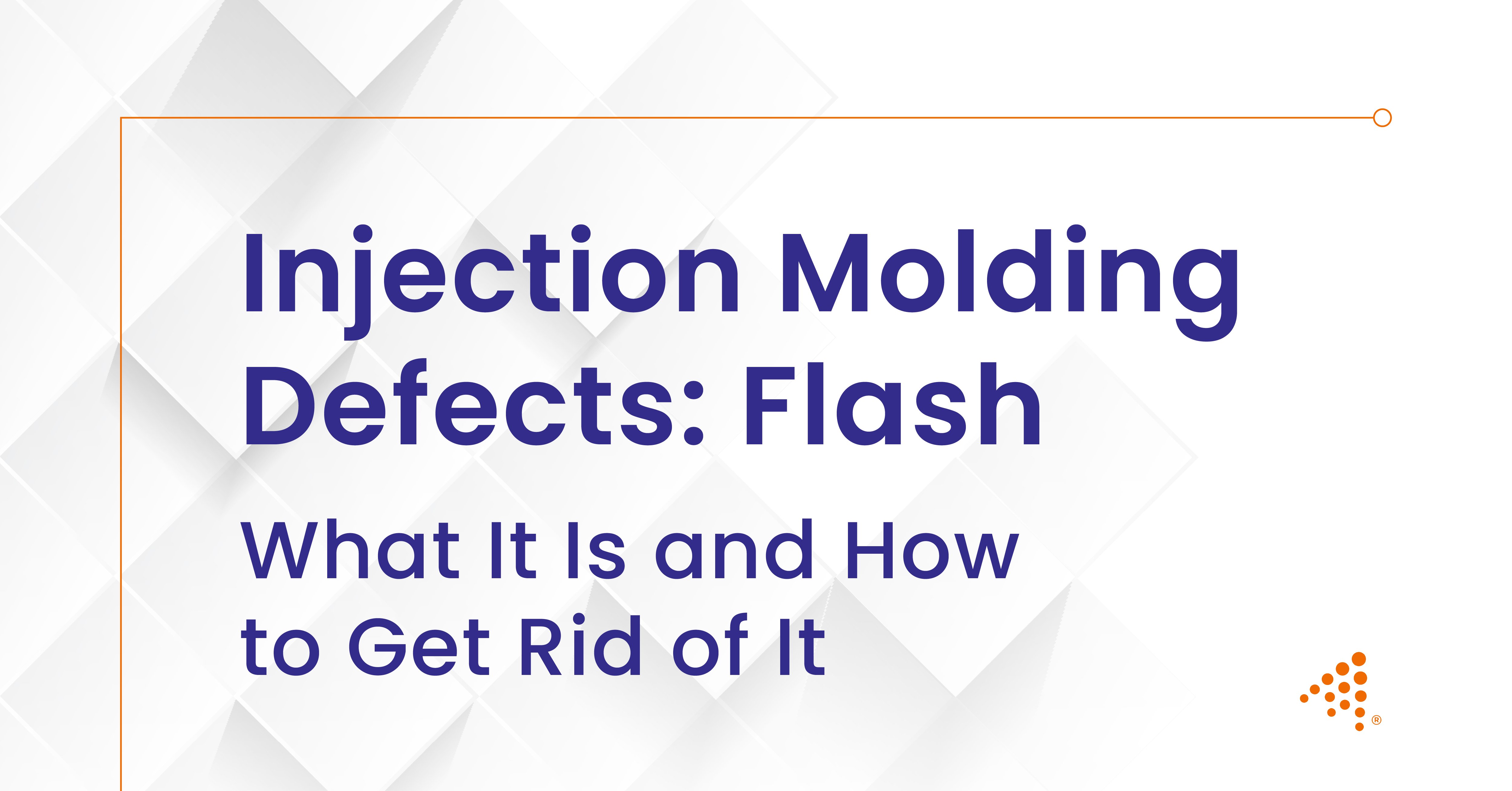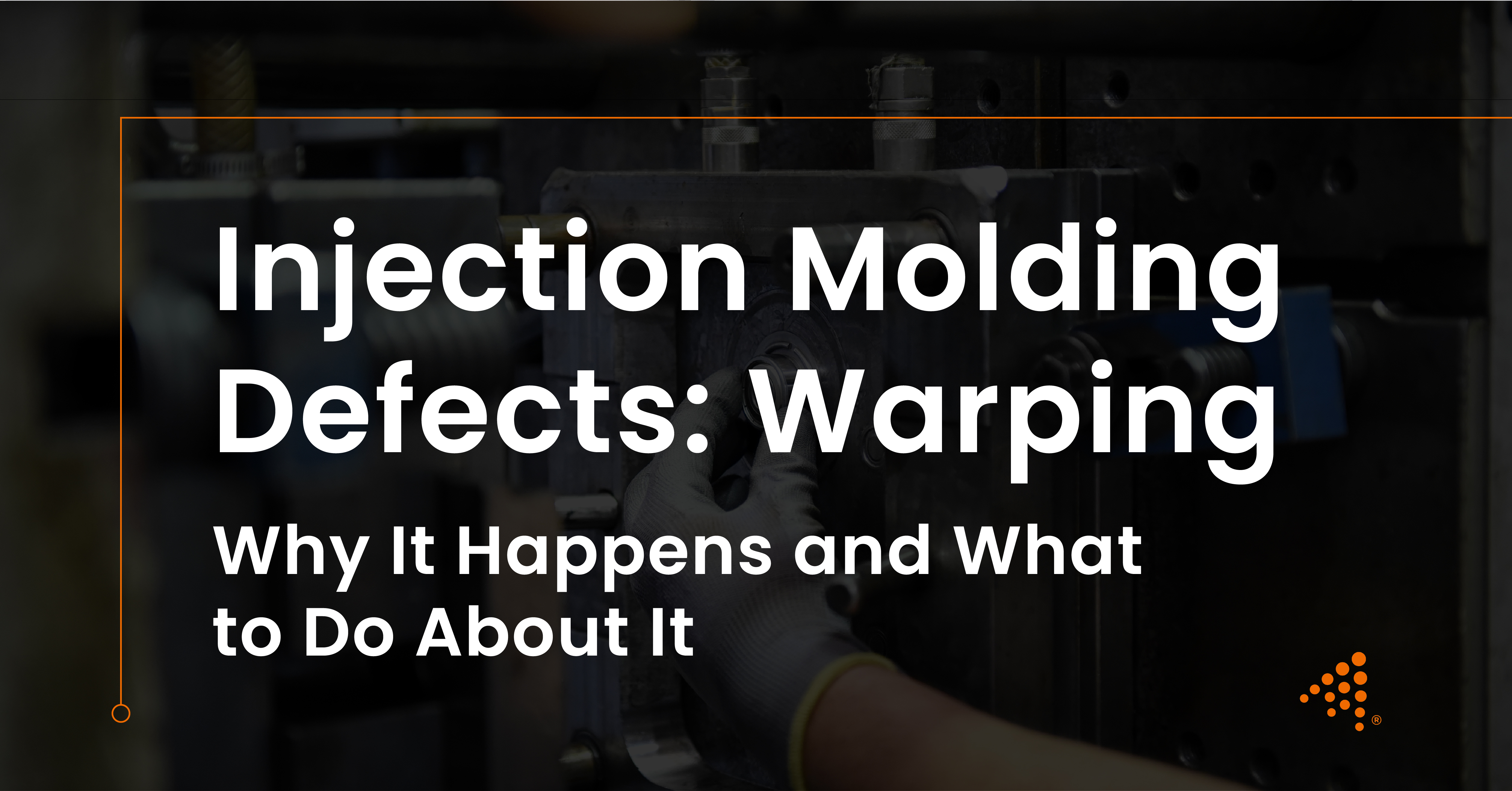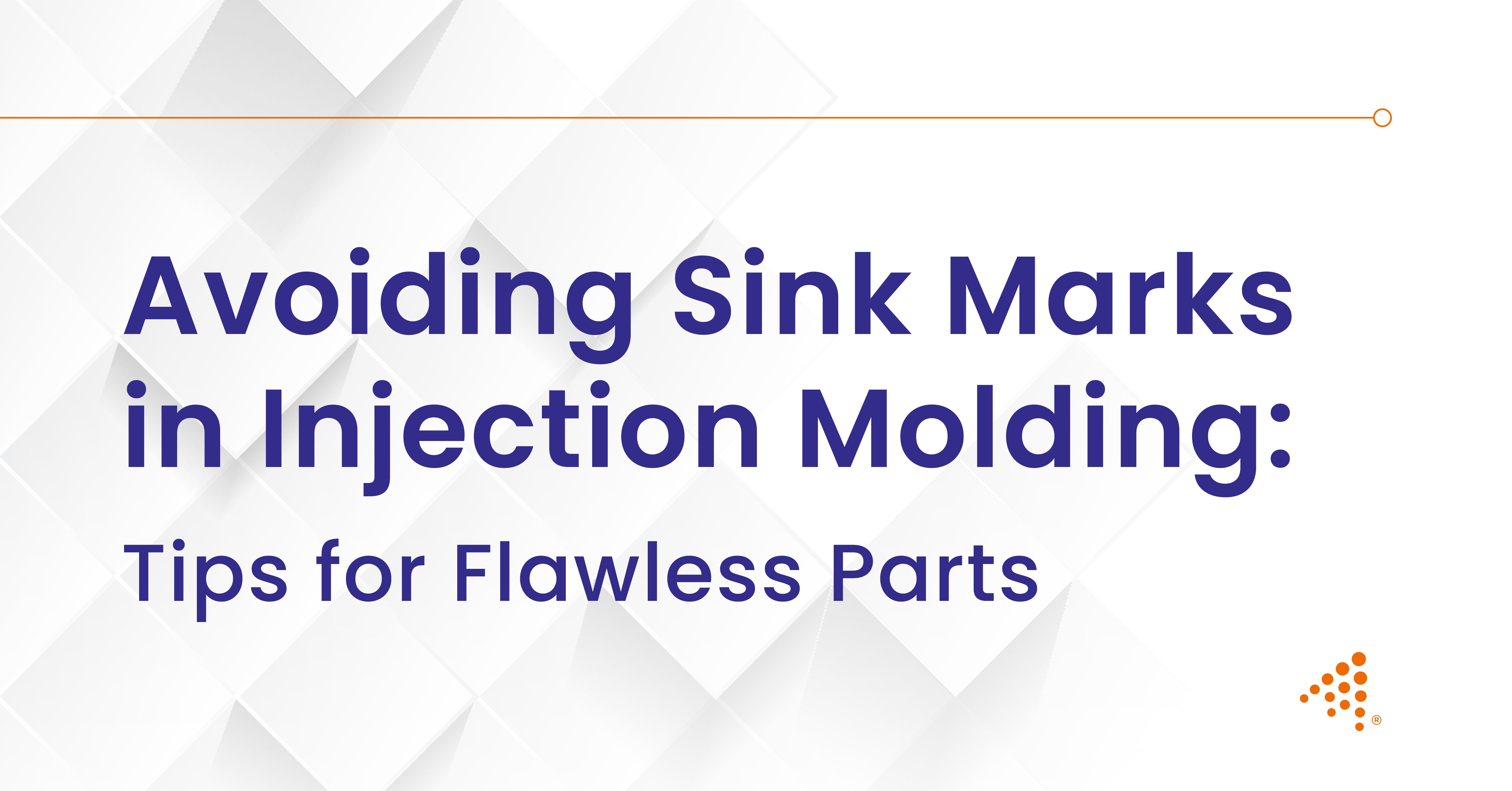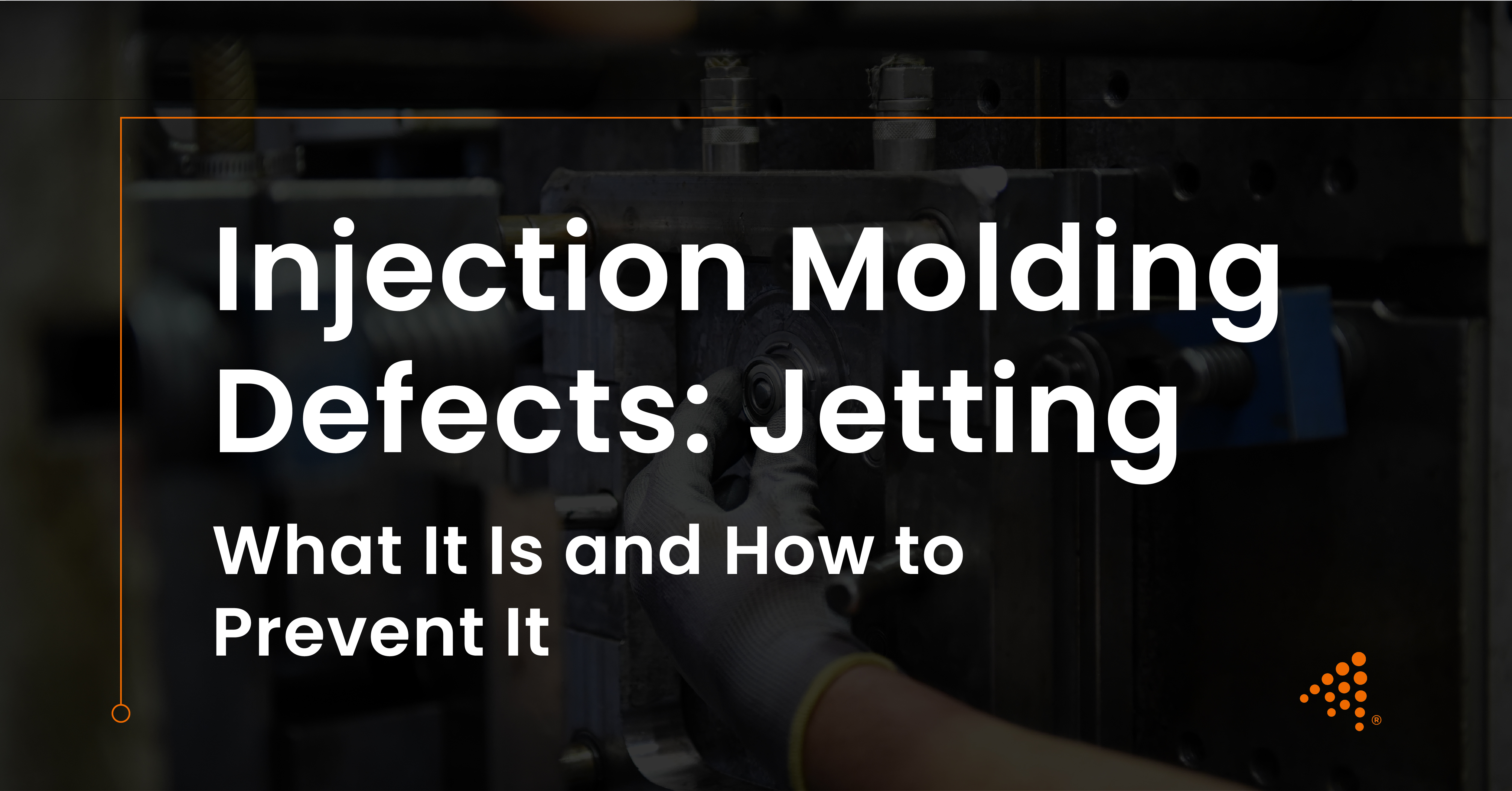Injection Molding Defects: Warping – Root Causes and Solutions
Dimensional accuracy is essential in the field of precision injection molding. However, even when a part is molded to exact specifications, it can...
4 min read
Nick Erickson : Aug 5, 2025 3:03:00 PM

In precision injection molding, the goal is always a perfect part that matches the design specifications exactly. However, various defects can arise during the process, one of the most common being "flash." Flash is a thin, unwanted layer of plastic that appears on the surface of a molded component. While it may seem like a minor cosmetic issue, flash can indicate underlying problems with the mold or process, and for industries like medical devices, automotive, or aerospace, it can interfere with part assembly, function, and sealing surfaces. Eliminating flash is essential for maintaining production efficiency, reducing waste, and delivering high-quality, reliable parts. This article will delve into what flash is, explore its primary causes, and outline the effective methods used to get rid of it.
Read More About Innovating Medical Device Manufacturing with PoNS™ | Aprios
Flash is an excess of molding material that appears as a thin, wafer-like protrusion on a part. It occurs when molten plastic escapes from the intended boundaries of the mold cavity during the injection process. The most common location for flash is along the parting line, which is the surface where the two halves of the mold come together. However, it can also form around ejector pins, inserts, or any area where the mold has a seam or moving component.
The presence of flash is a clear sign that the seal of the mold cavity has been compromised. Instead of being perfectly contained within the cavity and core, the molten plastic, under immense pressure, finds an escape path through a gap, no matter how small. This not only affects the part's final dimensions and appearance but also leads to material waste and often requires a secondary, manual trimming process, which adds labor costs and can damage the part if not done carefully.
Need help with flash issues?
Contact us for expert injection mold troubleshooting and design consultation.
The formation of flash can typically be traced back to a few key areas: the condition of the mold itself, the processing parameters used during injection, or a mismatch between the two. Identifying the specific cause is the first step toward a lasting solution.
The injection mold, or tool, is the core element that shapes the final part, and its condition is paramount. The most significant factor related to flash is the integrity of the mold's parting line. Over thousands of cycles, the constant opening and closing of the mold under high pressure can cause wear on the parting line surfaces. This wear creates microscopic gaps that prevent the two halves of the mold from sealing perfectly when clamped shut. The result is an easy path for molten plastic to escape, creating flash.
In high-precision molds, the parting line is meticulously designed to minimize any visible seam, but this precision can be lost over time without proper maintenance. Our injection molding tooling and plastic injection mold design services focus on minimizing such issues by providing precise tooling solutions that ensure long-term mold integrity.
Another common cause is contamination on the mold surfaces. Dirt, debris, or even small flecks of plastic from a previous shot can prevent the mold from closing completely, leaving a gap that leads to flash. Furthermore, the clamping force of the molding machine itself may be insufficient to hold the two mold halves (often called the A-side and B-side) together against the force of the injection pressure, allowing them to separate slightly.
Even a perfect mold can produce flash if the processing parameters are not properly calibrated. The most common process-related cause is excessive injection pressure or speed. Injecting the molten plastic too forcefully can generate enough pressure inside the cavity to physically push the two halves of the mold apart, creating a gap for the material to escape.
The temperature of the material also plays a role. A melt temperature that is too high will lower the viscosity of the plastic, making it more "runny." This low-viscosity material can more easily seep into even the tiniest of gaps in the parting line or around ejector pins. Similarly, using an excessive shot size or maintaining holding pressure for too long can force too much material into the cavity, leading to flash once the part is full.
Our design for manufacturing solutions and DFM development services help optimize your parts and processes, minimizing the risk of flash from the start.
Read More About Injection Molding Defects: Voids – Causes & Fixes | Aprios
Resolving a flash issue requires a systematic approach that begins with the simplest potential fixes and moves toward more complex adjustments. The solution almost always lies in improving mold maintenance or optimizing process parameters.
Since the condition of the parting line is so important, the first step is always to inspect and clean the mold. Removing any contaminants from the mold surfaces can often solve the problem immediately. If the parting line is genuinely worn or damaged, it will need to be repaired by a skilled toolmaker. This might involve carefully grinding the surface or using micro-welding to build the steel back up before re-machining it to its original specifications.
Ensuring the mold is robust enough for the job is fundamental to preventing defects. The design and quality of the tooling influence everything from cycle times to part quality, and using high-quality tooling is necessary for producing parts with tight tolerances and minimal waste.
Our design and manufacturing company specializes in custom injection molding solutions and plastic part design optimization, ensuring defect-free production.
If the mold is in good condition, the focus should shift to the injection molding process settings. The following adjustments are typically made:
Request a quote for your next custom injection molding project and experience our quality-driven manufacturing solutions.
Flash is more than just an inconvenience; it is a signal that the process is not fully in control. Left unaddressed, it can lead to dimensional inconsistencies, functional failures, and increased production costs. A well-designed mold, combined with a carefully optimized process, is the key to producing parts consistently and accurately, without defects. Successfully preventing defects like flash requires a deep understanding of material science, tool design, and processing parameters.
At Aprios, we leverage our comprehensive expertise in DFM for medical devices, injection mold design services, and secondary manufacturing processes to address these challenges, delivering clean, high-integrity parts for even the most demanding fields.

Dimensional accuracy is essential in the field of precision injection molding. However, even when a part is molded to exact specifications, it can...

In high-precision injection molding, achieving a flawless surface finish is often as important as meeting tight dimensional tolerances. One of the...

In precision injection molding, certain defects can manifest during the process, with one of the more notable being "jetting." While it may appear as...